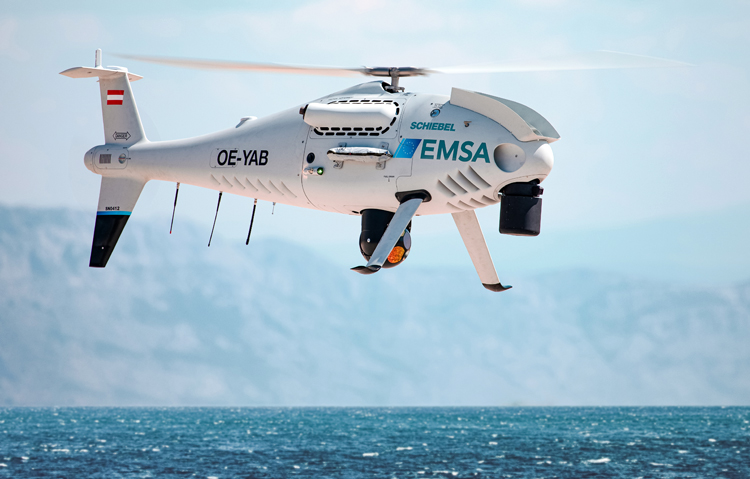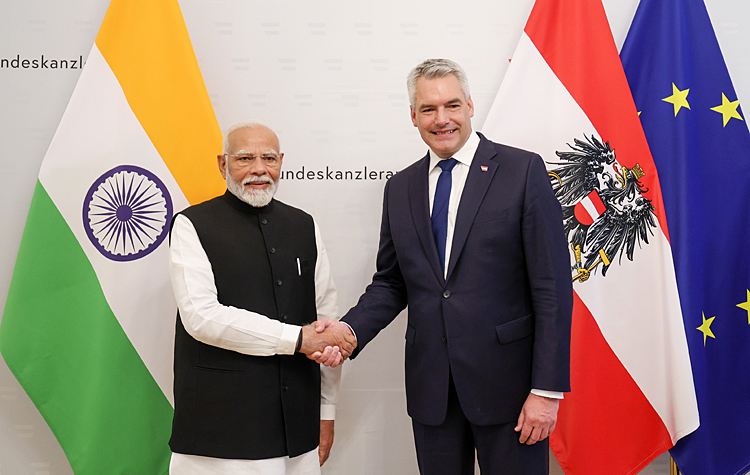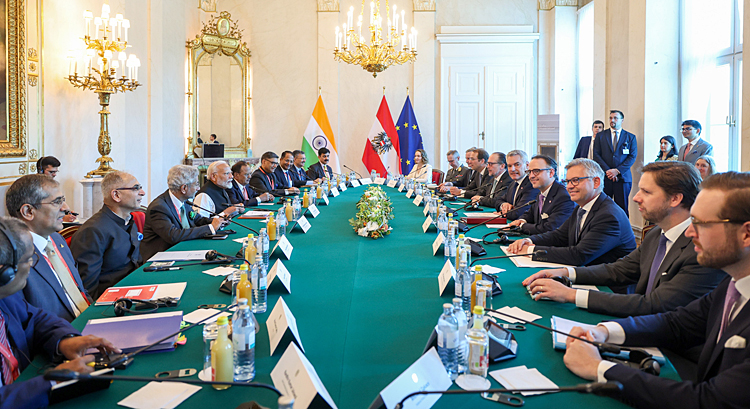INDIAN ARMED FORCES CHIEFS ON OUR RELENTLESS AND FOCUSED PUBLISHING EFFORTS

The insightful articles, inspiring narrations and analytical perspectives presented by the Editorial Team, establish an alluring connect with the reader. My compliments and best wishes to SP Guide Publications.

"Over the past 60 years, the growth of SP Guide Publications has mirrored the rising stature of Indian Navy. Its well-researched and informative magazines on Defence and Aerospace sector have served to shape an educated opinion of our military personnel, policy makers and the public alike. I wish SP's Publication team continued success, fair winds and following seas in all future endeavour!"

Since, its inception in 1964, SP Guide Publications has consistently demonstrated commitment to high-quality journalism in the aerospace and defence sectors, earning a well-deserved reputation as Asia's largest media house in this domain. I wish SP Guide Publications continued success in its pursuit of excellence.
Camcopter S-100 under 'Make in India'
Production of the Camcopter S-100 under the 'Make in India' initiative will boost India's military capabilities, supporting operations in challenging terrains and extreme climatic conditions
 |
The Author is Former Director General of Information Systems and A Special Forces Veteran, Indian Army |

After attending the 22nd India-Russia Annual Summit in Moscow on July 8-9, 2024, Prime Minister Narendra Modi visited Austria. This marked the visit of an Indian Prime Minister after a gap of over 40 years; Prime Minister Indira Gandhi had visited Austria in 1983. Year 2024 also marks 75 years of India-Austria bilateral relations. Prime Minister Modi held delegation level talks with Austria's Chancellor Karl Nehammer. Austria is a member of the European Union (EU) but not a NATO member.
Speaking to the media in a joint press conference, Prime Minister Modi said both he and Chancellor Karl Nehammer have decided to provide strategic direction to the bilateral relationship and a blueprint for the coming decades has been prepared, which is not limited to economic cooperation and investment alone. Chancellor Nehammer said, "There is a very good relationship between India and Austria. India helped Austria and in 1955, the negotiations came to a positive conclusion with the Austrian State Treaty. What unites India and Austria is concern over the development of the geopolitical situation."
Prime Minister Modi and Chancellor Karl Nehammer have decided to provide strategic direction to the bilateral relationship, preparing a blueprint for future cooperation beyond economic ties.
Before Prime MinisterModi's visit to Austria, the Indian Navy was already trying out the Austrian Camcopter S-100 rotary unmanned aerial system (UAS) for intelligence, surveillance and reconnaissance (ISR) in the Indian Ocean Region (IOR). Austrian firm Schiebel, which has developed and produced Camcopter S-100, was founded in Vienna in 1951. With facilities in Vienna and Wiener Neustadt (Austria), Manassas, VA (USA), Abu Dhabi (UAE), Shoalhaven (Australia) and Hyderabad (India), Schiebel has built an international reputation for producing high-tech military, commercial and humanitarian products.

Military users of Camcopter S-100 include Argentina, Belgium, China, Egypt, France, Italy, Jordan, Pakistan, Libya, Malaysia, Mozambique, Myanmar, Russia, Thailand, Tunisia, UAE, US and UK, while non-military users of the UAS are Croatia, Finland, Malta, Romania, Russia, UK and Norway. Camcopter S-100 has two hard points and carries two lightweight multirole missiles.
The Indian Navy has been testing the Austrian Camcopter S-100 rotary unmanned aerial system (UAS) for intelligence, surveillance, and reconnaissance (ISR) in the Indian Ocean Region (IOR).
Specifications and performance of Camcopter S-100 include: Capacity – 50 kg; Length – 3.11m (10 ft, 2 in); Length- 3.11 m (10 ft 2 in); Width: 1.24 m (4 ft 1 in); Height: 1.12 m (3 ft 8 in); Empty weight - 110 kg; Max takeoff weight: 200 kg; Fuel capacity - 57 L; Powerplant – Austro Engine AE50R Wnkel engine; Main rotor diameter - 3.4 m (11 ft 2 in); Maximum speed - 220 km/h; Cruise speed - 190 km/h; Never exceed speed - 240 km/h; Range - 180 km; Endurance – six hours; Service ceiling - 5,500 m (18,000 ft); g limits - +3.5 g to –1 g.

The Indian Navy has been undertaking ISR in the IOR to monitor the sea lane of communication using fixed wing UAVs operated from shore as well as the ships by handing over control to ships at sea. The use of Medium Altitude Long Endurance (MALE) UAVs has provided vital and crucial experience to the Indian Navy. However, rotary wing UAS like the Camcopter S-100 operating from the deck of warships provides much needed flexibility in sea-based operations to the Navy.
The Camcopter S-100, produced by Schiebel, is used by military forces in various countries and offers flexibility for sea-based operations with a service ceiling of up to 12,000 feet and endurance of over six hours.
Jajati Mohanty, CEO, Schiebel India told media in an interview that the Camcopter S-100 deal is going to forge a robust bond between Austria and India, particularly in enhancing India's maritime capabilities through cutting-edge unmanned aerial systems. He then added that the S-100 is a matured and proven platform to have operated effectively and efficiently in extreme environments. Our customers routinely employ the S-100 capability in arctic conditions down to -40 degrees Celsius and deserts up to +55 degrees Celsius, as well as in climatic zones of extreme humidity. The Indian sub-continent with its wide variance of climate needs a capable platform which can handle all these climatic conditions and meet its defined goal. With its operational service ceiling of up to 12,000 feet, its endurance exceeding 6 hours with a full fuel load and 34 kg of payload, the UAS is the ideal asset for hard-to-reach areas and challenging terrains.
Mohanty further said, "The Indian Navy has already commenced operating these unmanned systems in the IOR and we are in the process of participating in tenders pertaining to Coast Guard and the Army which have similar requirements and specifications. The Indian Naval programme provides for Austrian industry, namely Schiebel in this case, to work with an Indian production partner VEM Technologies in order to license produce the unmanned system in India. The programme would create a complete eco system for the rotary unmanned systems and would sustain the technology for effective exploitation. We are also of the opinion that future platforms like the S-300 which is presently under development would find its space in the Indian sub-continent for manufacturing and exploitation by the Indian military."
The Indian Naval programme includes a partnership with VEM Technologies to produce the Camcopter S-100 in India, creating a comprehensive ecosystem for rotary unmanned systems and enhancing India's maritime capabilities.
The S-100 can be operated with either aviation gasoline or kerosene (S1 or the S2 engine option), making it ideally suited for the maritime environment. It has a small footprint and can be easily maneuvered, stowed and maintained in confined spaces. The UAS can also operate in environments where GPS is not available (or denied), with missions planned and controlled using a simple point-and-click user interface. Production of the Camcopter S-100 under 'Make in India' will give a boost to India's military capabilities.





